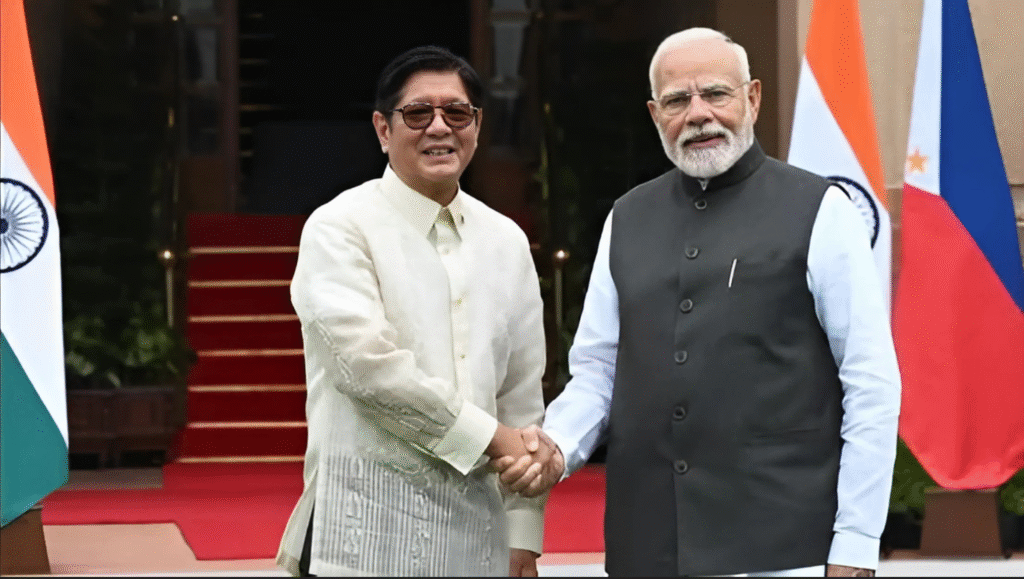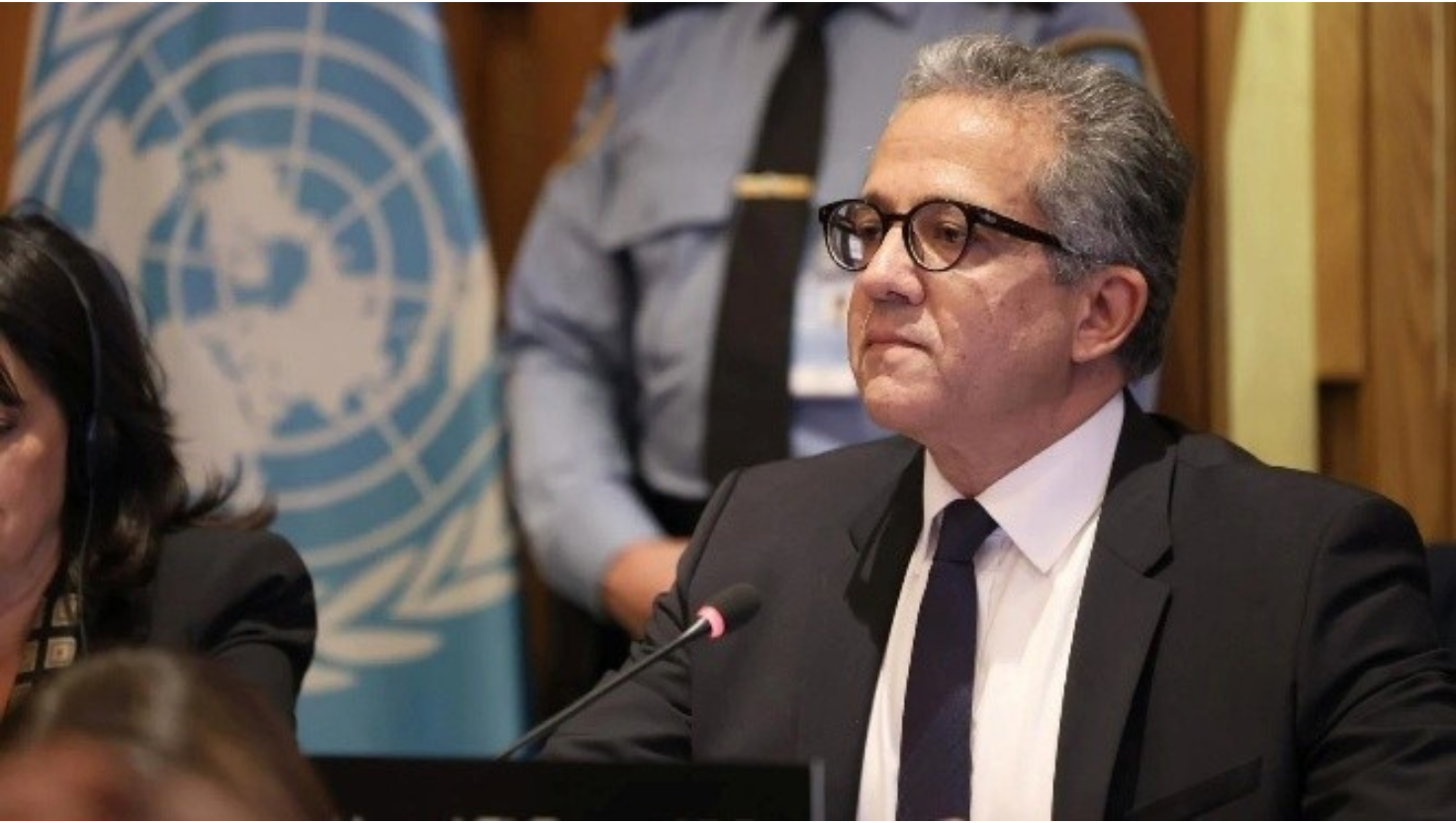India–Philippines Strategic Partnership – Simplified Overview
Syllabus: International Relations – Bilateral Relations (UPSC GS II)
Source: HT
Context
During the state visit of Philippine President Ferdinand Marcos Jr. to India (August 2025), the two countries signed a Joint Declaration on Strategic Partnership, expanding cooperation in defence, maritime security, space, and digital infrastructure.
Key Outcomes of the Visit
1. Partnership Upgrade
- Bilateral ties officially elevated to Strategic Partnership level.
2. Defence & Maritime Security
- Finalised Terms of Reference (ToR) for structured engagement between armies, navies, and air forces.
- ToR for Coast Guard cooperation covering joint activities and information exchange.
- First-ever participation of Indian naval ships in a Philippine naval exercise.
- India’s hydrography ship joined joint mapping and domain awareness activities.
3. Trade & Economic Ties
- Formal talks launched for a Preferential Trade Agreement (PTA).
- India’s exports: pharma, electronics, rice, engineering goods.
- Philippines’ exports: semiconductors, ores, machinery.
- Indian FDI: USD 5 billion.
4. Connectivity & Tourism
- Direct flights to start by end-2025.
- India offering 1-year free e-tourist visa for Filipinos.
5. Legal & Institutional Cooperation
- Mutual Legal Assistance Treaty in criminal matters.
- Treaty on Transfer of Sentenced Persons for consular support.
6. Digital & Technology Cooperation
- India to help set up Philippines Sovereign Data Cloud.
- Invitation to join Information Fusion Centre – Indian Ocean Region (IFC–IOR) for maritime intelligence sharing.
7. Regional & Global Stance
- Both reaffirmed commitment to UNCLOS 1982 and freedom of navigation in the South China Sea.
- India backed a rules-based Indo-Pacific order.
Historical Background
- Diplomatic ties since 1949 – among India’s earliest post-independence relations.
- 2024 marked 75 years of ties, with focus on high-level visits, institutional dialogues, and capacity building.
Major Areas of Cooperation
Defence & Security
- Delivery of BrahMos missiles in 2024 – Philippines first foreign recipient.
- Institutionalised Joint Defence Cooperation Committee (JDCC) and Service-to-Service dialogues.
Maritime Cooperation
- Hydrographic data sharing, coastal surveillance, and multilateral exercises (ADMM-Plus, MILAN, ASEAN–India drills).
Space Collaboration
- ISRO to assist in satellite launches, capacity building, and weather/agriculture monitoring.
- Partnership with PhilSA boosts India’s space diplomacy.
Health & Education
- Philippines first ASEAN nation to approve Covaxin.
- ~9,800 Indian students, mostly in medicine, study in the Philippines.
Development & Fintech
- Quick Impact Projects in disaster management and agriculture.
- MoU on fintech cooperation for digital payments and inclusion.
Challenges
- FDI Imbalance: Philippines’ investments in India remain low.
- Pending Agreements: Some MoUs (space, tourism, hydrography) not yet implemented.
- China Factor: Manila balances ties between Beijing and partners like India/US.
- Connectivity Gap: Direct flights pending, limiting tourism and education exchanges.
Importance for India
- Act East Policy: Strengthens India’s ASEAN outreach.
- Maritime Strategy: Ensures balance in South China Sea against Chinese assertiveness.
- Defence Exports: Opens Southeast Asian markets for Indian defence products.
- Space & Tech Diplomacy: Positions India as a trusted development partner.
- People-to-People Links: Students, diaspora, and tourism strengthen relations.
Way Forward
- Conclude PTA to boost trade.
- Start joint defence production under Atmanirbhar Bharat.
- Launch joint satellite missions for weather, disaster relief, and agriculture.
- Promote academic and medical tourism via new air routes.
- Strengthen Track-1.5 dialogues with think tanks and universities.
Conclusion
India–Philippines relations are shifting from symbolic diplomacy to deep strategic cooperation. As maritime democracies, their collaboration in defence, space, and digital governance can shape the Indo-Pacific’s balance of power.











